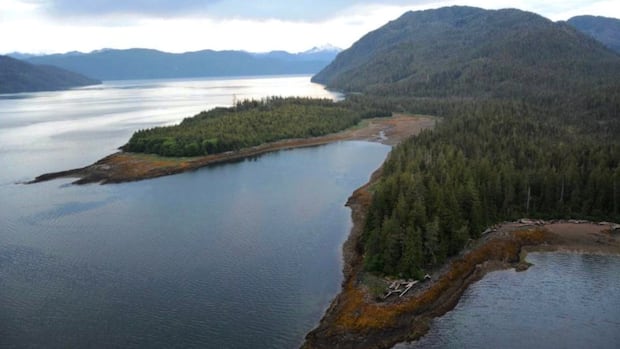The B.C. government has approved the continued construction of a new pipeline project that could supply natural gas to a proposed floating liquefied natural gas export terminal off B.C.’s North Coast.
The Prince Rupert Gas Transmission project is a joint venture between the Nisga’a Nation and Texas-based Western LNG.
The approximately 900-kilometre natural gas pipeline was originally proposed to run from Hudson’s Hope in northeastern B.C. to Lelu Island, near Prince Rupert, though updated applications from the proponents would see the pipeline start in Chetwynd in order to avoid caribou habitat, as well as an alternative terminus point at Wil Milit on Pearse Island, about 82 kilometres north of the Port of Prince Rupert and closer to the proposed Ksi Lismns LNG export facility.
The Nisga’a Nation and Western LNG say the Ksi Lisims project would be a floating production facility capable of producing 12 million tonnes of liquefied natural gas per year.
The approval of the associated pipeline comes as there is a renewed interest in LNG export facilities as a way to diversify Canada’s energy industry away from its reliance on the United States.
The project also faces opposition from several groups, including the Gitanyow Hereditary Chiefs, who argue it poses a risk to important salmon habitat and will accelerate climate change.
Project could have been forced back to drawing board
The pipeline was first approved in 2015 under the ownership of Calgary-based TC Energy Corp, when it was meant to supply the now-cancelled Pacific NorthWest LNG terminal spearheaded by Malaysian energy giant Petronas.
It was purchased by the Nisga’a Nation and Western LNG in 2024 under their revised proposal for the Ksi Lisims facility.

But given the long delays, the partners also had to prove they had “substantially started” construction of the pipeline by the end of November 2024 or the permits would expire and the entire proposal would have to start again from the beginning.
That construction started last year, and the application was submitted to B.C.’s Environmental Assessment Office on Nov. 19, 2024 — which the office has now approved.
Gitanyow hereditary chiefs oppose project
The construction also faced protests led by Gitanyow hereditary chiefs, who blockaded a forest service road in an attempt to prevent construction workers from passing through their territory.
Tara Marsden, sustainability director for the Gitanyow hereditary chiefs, has previously told CBC News she is worried the push to approve new projects in the face of the economic threats emanating from the United States would sideline environment concerns.

She pointed out that Western LNG has significant backing from Blackstone Inc., a major American asset manager whose CEO publicly endorsed Trump and contributed to his campaign — undermining any notion that the project is needed to push back against the American president.
However, Eva Clayton, president of the Nisga’a Lisims government, has characterized the project as an opportunity for “Indigenous people to develop a pipeline project in our own way,” which the nation says includes an opportunity for other First Nations along its route to take an ownership role.
“By working together, and with world-leading construction managers, we’re confident this project will set a new bar for environmental protection and leave a legacy of prosperity for Nations across B.C.,” she said in an August 2024 statement.
Debate over environmental impact, economic case
Though LNG is often referred to as “clean” because burning it for fuel causes fewer emissions than coal or oil, the claim is disputed by some analysts because of the energy and destruction it takes to produce.
LNG is made from natural gas, a fossil fuel often extracted from northeast B.C. and Alberta through a practice called hydraulic fracturing, or fracking. It involves drilling down into the ground and injecting a mixture of water, sand and chemicals into the ground to force the release of the oil and gas.

One of the known impacts of fracking is an increase in earthquakes, which have been felt with increasing frequency in B.C.’s Peace River region in recent years.
The gas is then shipped via pipeline to terminals, which cool it to about –160 C, at which point it can be shipped overseas for use as a fuel.
There has been some dispute about the actual market for LNG, with several projects having been proposed and abandoned over the years.
At the moment, the LNG Canada facility in Kitimat, B.C., is preparing for its first exports, and there are at least five other projects, including Ksi Lisims, at various states of approval throughout the province.
The previous version of the project, backed by Petronas, was scrapped in 2017 due in part to falling LNG prices.
Ksi Lisims is still waiting for its final approval from the B.C. government.
Its proponents say if it is approved in 2025, it could be online by 2029.
